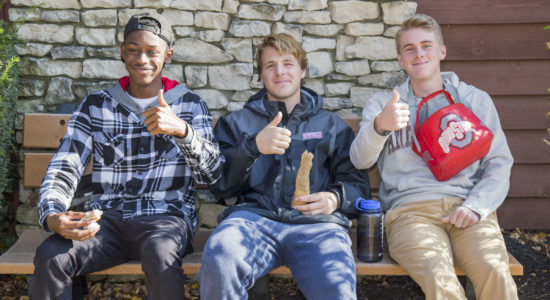Sustainable Back-to-School

Aug 29, 2022
According to a 2021 National Retail Foundation (NRF) back-to-school shopping survey, American families can spend an average of $849 on back-to-school supplies. Regardless of your income, that can be painful to your pocket.
If you’re on a tight budget, finding extra money for backpacks, lunch boxes, and laptops can be stressful. SWACO has some tips to help make back-to-school greener and more affordable. Reuse Items:- While it can be a thrill to buy new supplies at the start of each school year, it’s better for your wallet and the environment to reuse what you already have on hand. Before heading to the store, inventory last year’s supplies to see what is still in good working condition, versus buying everything new.
- Kids grow fast, so it’s not always possible to continue to wear last year’s school clothes or reuse sports equipment. Before buying new, check local secondhand stores like Clothes Mentor, Once Upon a Child and Play it Again Sports for greener (and cheaper!) options. For families who find themselves in need this year, organizations like Charity Newsies provide clothes and supplies free of charge.
- If you have to buy new, look for sustainable school supplies, like notebooks made with recycled paper or plantable pencils (they exist!). And remember to recycle any cardboard packaging (like shoe boxes) or paper in a curbside or drop-off recycling container.
- Consider buying used tech (computers, laptops, tablets) from retailers that sell used or refurbished equipment, like Gadget Ease in Columbus. If you’d like to donate your old tech, learn more about SWACO’s E-Waste Diversion program here.
- Ditch the brown paper bags and pack lunch in a reusable lunch box along with a BPA-free water bottle and reusable or biodegradable utensils.
- We know kids love their snacks, but to reduce packaging waste, avoid pre-packaged foods and opt for whole foods instead, like fruits, vegetables, legumes, nuts, whole grains, meat, fish and eggs.
- Encourage your child to bring home leftover food. Food scraps like apple cores and banana peels can be brought back home to be composted, and uneaten food can be reused for dinner or tomorrow’s lunch.
- If you live close enough to school, consider walking or biking. For those who may be too young to go on their own, consider organizing a “walkpool” with rotating parent chaperones for a group of kids each week.
- For those who live further out and can’t take the bus, organize a group of families to participate in a neighborhood carpool, alternating on a regular basis.


